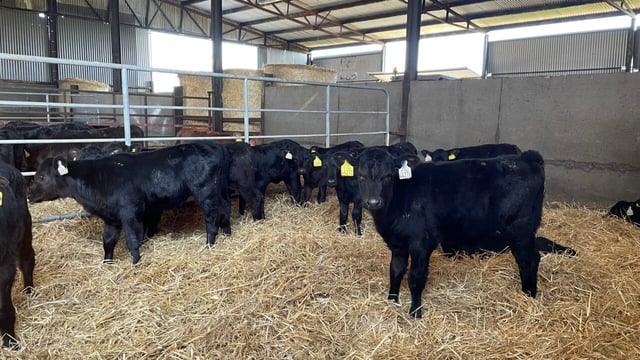Nitrates: Contract rearing heifers vs exporting slurry
There has been a significant interest in contract rearing heifers in recent years, as farmers have realised its benefit for reducing their stocking rate and therefore becoming compliant in terms of the nitrates directive.
This recent uptake in getting your heifers reared off farm comes as the nitrates derogation stocking rate went from 250kg of organic nitrogen (N) to 220kg of organic N in the past year.
This change was also followed by the introduction of nitrates excretion rates for dairy cows through banding and a change to nutrient densities of slurry when exporting.
These changes have seen farmers reduce cow numbers, take on additional land, export slurry, change management practices to move down a band or contract rear heifers.
On a 'Contract Rearing' Teagasc webinar, collaborative farming specialist at Teagasc, Ruth Fennell said: “Everybody needs to look at their own individual situation and see which of these options might suit them the best.
"They may look at a combination of some of these options, but it is important that they look at the financial implications of these options for their own individual farm.”
With further uncertainty around the nitrates derogation this year, farmers fear that the nitrates derogation won't hold beyond 2025 which may mean that different measures might have to be explored.
Contract rearing may be the only choice for some farmers to reduce their stocking rate as the cost of leasing or land availability may be the limiting factor.
Besides stocking rates, they may feel they need the heifers reared off farm due to a shortage of available labour or they might have a shortage of slurry accommodation.
The spring workload can be tough on many farmers and if there is an option to send calves away from the farm, once they are weaned, it may reduce the pressure and allow for other tasks to be done.
As well as this, the farmers may not have the calf facilities to keep on these calves and may not have other facilities as these heifers will need accommodation for their first and second winter.
For the contract rearer, it may compliment the existing farm enterprise, increase the stocking rate and output, provide better cash flow with monthly direct debits, remove risk of volatile markets and pric
On the webinar, Fennell talked through an example farm comparing the impact of exporting slurry or contract rearing heifers on a 44ha farm, carrying 100 cows and having a maximum derogation limit of 220kg N/ha.
Fennell expressed her concern of exporting slurry as she said: “Exporting that valuable nutrient off the farm in order to maintain our stocking rates can be a significantly costly exercise.”
Another concern that was highlighted was actually finding a farmer that can take in that slurry as many farms have low phosphorus (P) allowances and the nitrogen density in slurry has decreased from 5kg of N/m3 to 2.4kg N/m3.
E.g., both farm are identical with 44ha and with 100 cows (middle band, 92kg of organic N), 20 R1s, 20 R2s and all other calves retained for three weeks.
Where slurry was exported off the farm example, the results are as follows:
- Total organic N for the year estimated at 10,800kg N or 245kg organic N/ha;
- Needs to reduce organic N by 25kg/ha or 1,100kg to comply with 220kg maximum organic N allowance under derogation;
- Cows produce 0.33m3 of slurry per week over the winter - Over a 16 week winter, this equates to 528m3 for 100 cows;
- At 2.4kg of organic N/m3 of slurry, this is equivalent to 1,267kg of N.
- Virtually all of the slurry from the cows needs to be exported to meet stocking rate limit.
In this scenario, virtually all of the slurry from the cows needs to be exported to meet stocking rate limit which is unrealistic and very costly on the farmer.
When the same farmer kept his slurry and contract reared his heifers, the results were as follows:
- Organic N: 20 (R1s) X 21kg organic N and 20 (R2s) X 42kg of organic N (9 months of the year) = 1,240kg of organic N;
- If contract reared, this would reduce the farm stocking rate to 217kg N/ha;
- Additional grass available to the dairy herd should allow for reduced meal fed to cows and increased performance – both physical and financial.
From the two examples, it is clear to see that contract rearing heifers is the more viable option for farmers who are concerned of being non-compliant when it comes to nitrates.
As well as the additional space allocated to dairy cows which will reduce costs, the availability of slurry on the farm will reduce fertiliser bills and grow more grass on the farm.





